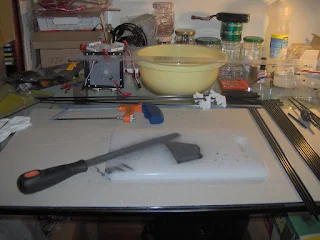I just got the clone of the Arduino Mega board that I have ordered to solve the problem of how to connect more than one Serial device. After some research, I have concluded that the best choice is the Seeeduino Mega board because of it is totally compatible with most Arduino Shields, it is flat form factor and small (similar size to the Arduino Duemilanove board, but 30% smaller than the Arduino Mega), it has 4 UARTs (hardware serial ports) and 70 digital input/output pins, and it is not very expensive. Meanwhile it has the disadvantage that one has to solder the pin-headers.
In this link you can see the differences between the Seeeduino Mega and the Arduino Mega board.








